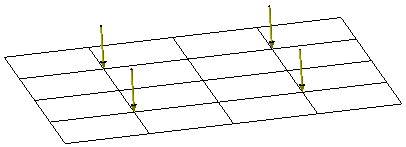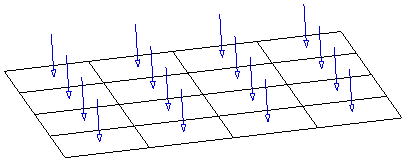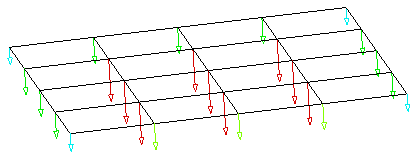More about Computed Data | ||||
|
| |||
Methodology
Structural analysis pre-processing specifications are generally applied to the centers of gravity of mesh entities (where entities can be elements, edges, faces, ...). The solver needs to evaluate these pre-processing specifications at the degrees of freedom of mesh nodes.
The recommended methodology to use computed data is:
- Set your preprocessing specifications (restraints, loads, masses).
- Show computed data.
- Update computed data.
- Generate images on computed data.
- Generate a report on computed data.
Example
This is an example of a pressure load applied to a face.
- Preprocessing representation: symbol representing the pressure specification

- Finite element model view: Pressure image displayed at face of element

- Solver view: Point Force Vector image displayed at node of element

![]()
Computed Data Content and Naming Rules
Computed data can contain computed loads and computed masses.
The content of computed data
depends on:
- The update status of computed data.
- The content of the analysis scenarios (load set or mass set).
In the following example, the static scenario contains a load set and a mass set;
Computed Data.1 contains both computed loads and computed masses.
To summarize:
| Content of analysis scenario | Content of computed data | Naming rules |
|---|---|---|
| Load set called Loads.1 | Computed loads | Computed Loads.1 (Loads.1) |
| Mass set called Masses.1 | Computed masses | Computed Masses.1 (Masses.1) |